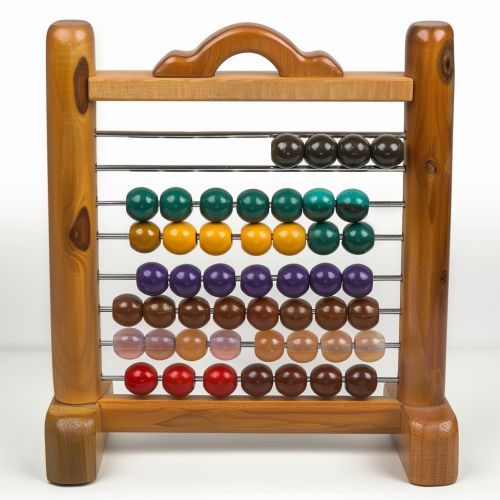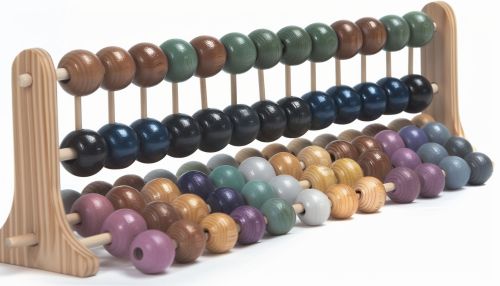Abacus
History
The abacus, also known as a counting frame, is a calculating tool that was in use in the ancient Near East, Europe, China, and Russia, centuries before the adoption of the written Hindu–Arabic numeral system. The exact origin of the abacus is still unknown. Today, abacuses are often constructed as a bamboo frame with beads sliding on wires, but originally they were beans or stones moved in grooves of sand or on tablets of wood, stone, or metal.
The use of the abacus in ancient cultures is not strictly documented, but it is believed that it was used by ancient Sumerians and Egyptians as early as 2700–2300 BC. The ancient Greeks used a similar technology known as the counting board, which was a lined table with pebbles used as counters. The Romans also used counting boards, but little is known about their design and operation.
The Chinese abacus, known as the suanpan, is typically 20 cm (8 in) tall and comes in various widths depending on the operator. It usually has more than seven rods. There are two beads on each rod in the upper deck and five beads each in the bottom for both decimal and hexadecimal computation. The beads are usually rounded and made of a hardwood. The beads are counted by moving them up or down towards the beam. The suanpan can be reset to the starting position instantly by a quick jerk along the horizontal axis to spin all the beads away from the horizontal beam at the center.
Design and operation
An abacus is typically a rectangular frame with rods or wires strung across it. Beads or other movable counters are placed on the rods. The counters are moved back and forth along the rods to represent different numerical values. The design of the abacus can vary greatly depending on the culture and era in which it was used. However, all abacuses are designed to help with arithmetic tasks, such as addition, subtraction, multiplication, and division.
The operation of an abacus relies on the principle of place value notation: the position of a bead or counter on the abacus determines its value. In a simple binary abacus, counters can represent 1 or 2 values, such as 0 and 1, or 1 and 2. In a decimal abacus, counters can represent values from 0 through 9, depending on their position.
The user of an abacus is called an abacist. The abacist moves the counters along the rods to perform arithmetic operations. For example, to perform the addition operation, the abacist would move counters representing the addends to one side of the abacus, then move counters representing the sum to the other side.
Modern use and legacy
Despite the development of calculators and computers, the abacus is still used in some areas, particularly in Asia. In Japan, children are taught to use a soroban abacus, with competitions held nationwide. The use of the abacus is also part of the primary education curriculum in both China and South Korea.
The abacus has also influenced the design of computer hardware and software. For example, the binary abacus is used as a model for computer hardware design, while the concept of place value notation has influenced the design of computer programming languages.


